Soil Lab Tests, Methods, and Resources for Gardeners
I’m sharing my favorite lab soil tests, methods, and resources for gardeners. Soil testing is vitally important if you want to plant and grow anything.
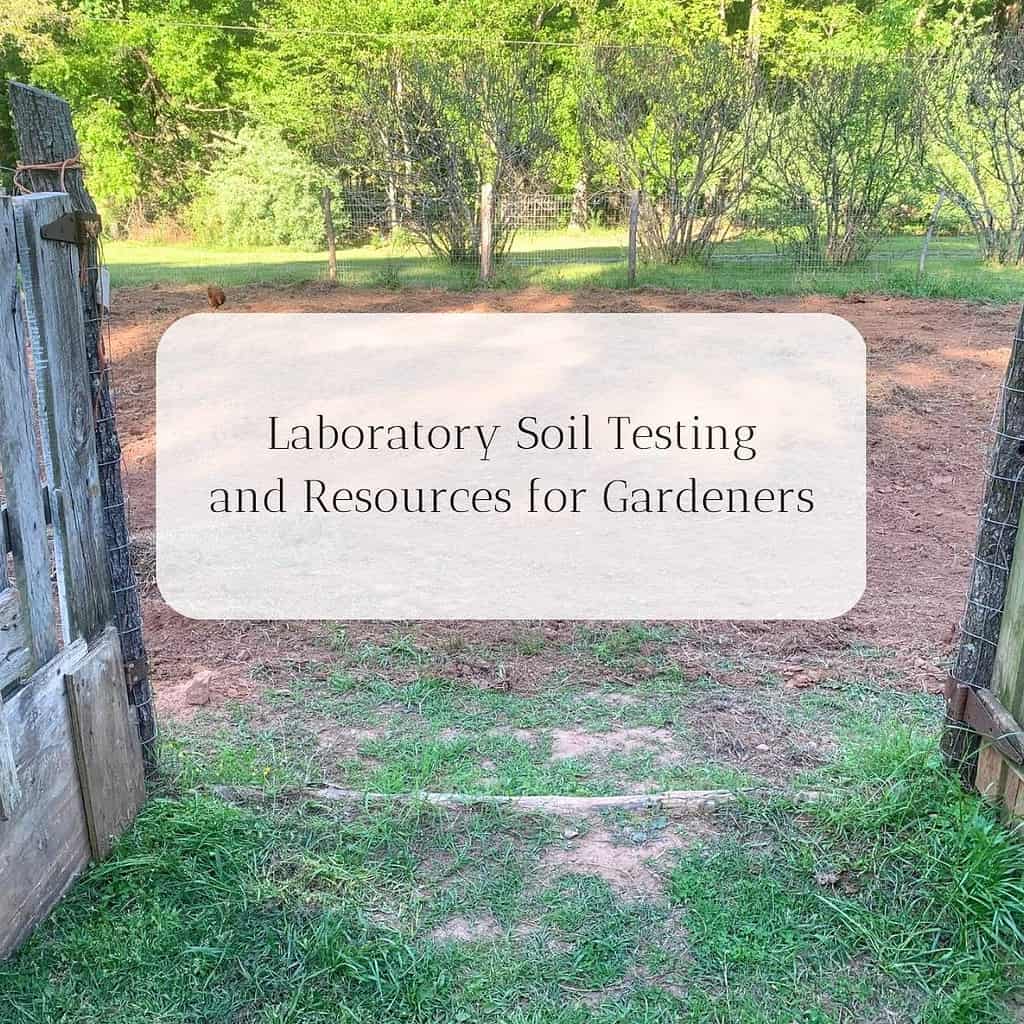
Knowing your soil is essential for you to be a successful gardener of any kind. It doesn’t matter if you’re growing lawn grass or crops for sale and distribution, you need to get your soil tested.
What are soil lab tests?
Soil lab tests are scientific tests that measure and report soil fertility (nutrients analysis), soil pH (is the soil acidic or alkaline), soil texture (is the soil clay, sand, silt, or loam) from representative samples of soil that people send in.
What does a soil test tell you?
A basic soil test is an important tool that will tell you valuable information like your soil pH, the texture of your soil (clay, sand, loam), the organic matter content, nutrient content, and the amount of fertilizers recommended to improve crop production.
Some State Universities that have a College of Agriculture may participate in the USDA’s National Institute of Food and Agriculture’s (NIFA) land-grant partnership. The NIFA is the Federal partner in a vast network of teachers, scientists, and extension staff that address critical issues about agriculture, food, the environment, and communities. Here is a map of the United States Land-Grant Universities, so you can find one near you.
If you are concerned about heavy metals, be sure to ask about additional testing and other affordable soil testing services.
Soil Lab Tests and Resources for Gardeners
Before going into all the details about testing methods, soil test kits, and resources, we need to understand something.
Healthy soil equals healthy plants and unhealthy soil equals unhealthy plants. If those plants happen to be edible, your soil plays a huge role in the available nutrition of that food.
I wrote a post on using worm castings that went into great detail about studies that have proven that the nutritional density of food is directly affected by the nutrients in the soil they’re grown in. Furthermore, the studies found that whatever is IN the soil (pesticides, for example) winds up inside of the food.
Gardening without doing soil lab tests is risky.
When I first started growing vegetables, I didn’t really know what I was doing.
Specifically, I didn’t know what to plant, when to plant it, or how to take care of it. I bought bags of top soil, cut the center of the plastic out (I know! PLASTIC! Thank goodness I’ve come a long way since then.) and transplanted the tender vegetables I purchased at our local garden center. Nothing survived.
But that first garden taught me a lot.
First, I learned that plain top soil…or at least the bags that I purchased…didn’t have enough nutrients to grow vegetables very well.
Second, I’m not very good at watering anything in a container (or plastic soil bag) and need my plants to be in the ground with deep roots.
Third, you can’t grow whatever you want outside during ANY time of the year. The broccoli and cauliflower I planted died pretty quick when we hit summer.
The next vegetable garden I planted was in the ground in our front yard where we had full sun.
I double-dug that little plot, added rich compost, and planted some tomato plants, bean seeds, cucumber seeds, and some basil. But when everything started growing, I noticed that they didn’t look healthy and the leaves were curling up and turning brown.
After some observation and online research, I learned that rainwater runoff and my neighbor was to blame. My neighbor routinely sprayed his yard for weeds and the rain picked up those chemicals and ran it down the slope into my garden bed, eventually killing everything in it.
If I had done a lab soil test on that patch of yard, it could have alerted me to harmful chemicals before I took the trouble of doing all that work.
Basic soil lab tests measure the pH, nutrient levels, and soil type.
I recommend that gardeners get a basic chemical soil analysis of the area they want to turn into a garden before they start digging. The basic soil test measures the soil pH (is the soil acidic or alkaline), the nutrient levels, and the soil type.
The soil test will let you know your soil properties like whether you have acidic (low pH) or alkaline (high pH) soil. This is useful because most fruits and vegetables prefer a slightly acidic soil pH of about 5.8 to 6.5. For reference, a neutral pH is 7.0.
Basic soil tests will also let you know how much phosphorus and potassium your soil has as well as trace elements like magnesium and calcium. It’s not usually necessary to pay extra to determine the amount of soluble salts in your soil.
The soil test will also tell you what your soil texture is; whether you have heavy clay soil, loose sandy soil, or the ideal soil tilth called loam, which is a mixture of clay, sand, and silt.
If spring fever hits you hard and you find that you just HAVE to get your hands dirty and plant something outside, try to keep it cheap and just sow some seeds.
If you have virgin ground that you know has never been sprayed with chemicals, sow your seeds there. You can also use soilless media like peat and coconut coir and start your seeds in biodegradable pots.
Additional soil lab options can provide more detailed information.
Along with routine soil analysis, labs provide commercial testing, analysis of soil and tissue samples from lawns and gardens, and analysis of water from houses, wells, and other water resources.
I have only done the cheaper basic soil test because the other options can get pretty pricey. But if you’re planning on farming a big area for commercial purposes, the additional analysis can help save you money in the long run.
Most over-the-counter soil lab tests are not reliable.
While it may be tempting to buy a cheap, commercially available soil test kit, you will be better off in the long run if you use professionals to test your soil. The cheap test kits might be able to give you your soil’s pH level but it can’t tell you other necessary information like the chemical properties or how much lime to apply to change your acidity.
Consistently accurate results can only come by submitting samples to soil testing labs. But that’s not as hard as it sounds.
If you live in the United States, some government agencies can help you. Your local Natural Resources Conservation Service (NRCS) office has experienced conservationists that can assist you with developing a soil testing plan. Find your nearest USDA Service Center here. The NRCS or your local Extension office can also provide detailed information on labs that are available to provide soil testing in your area. Find your local Extension office here.
We always use our local Extension office when we do our soil tests. They have free soil sample boxes, appropriate forms, and a step-by-step information sheet to guide you. All you have to do is take your sample, send it off to the lab, and wait to receive your soil test report. The routine analysis is only $10 in my area, so it’s an affordable option.
Soil Lab Tests and Resources for Gardeners: How Do You Take a Good Soil Sample?
Soil sampling will largely depend on your land, what you have done to it in the past, and what you plan to do with it in the future.
If you have areas that have been treated differently in the past, take separate samples. Likewise, if you plan on growing different crops in some areas, it’s a good idea to take a sample of just that area and keep it separate from your other samples. The soil lab can give you individual results for each sample you submit.
The first step in taking a good soil sample is to get a clean bucket and small stainless steel or other clean hand shovel. Try to keep contamination to a minimum because it could skew your soil analysis!
Next, go out to the area you want to test and collect a sample of soil in 10 or more random locations. Using your hand shovel, dig into the ground about 2 inches and collect a shovel full of soil for your bucket.

If you have any little helpers around, this is a great job for them to help you with!
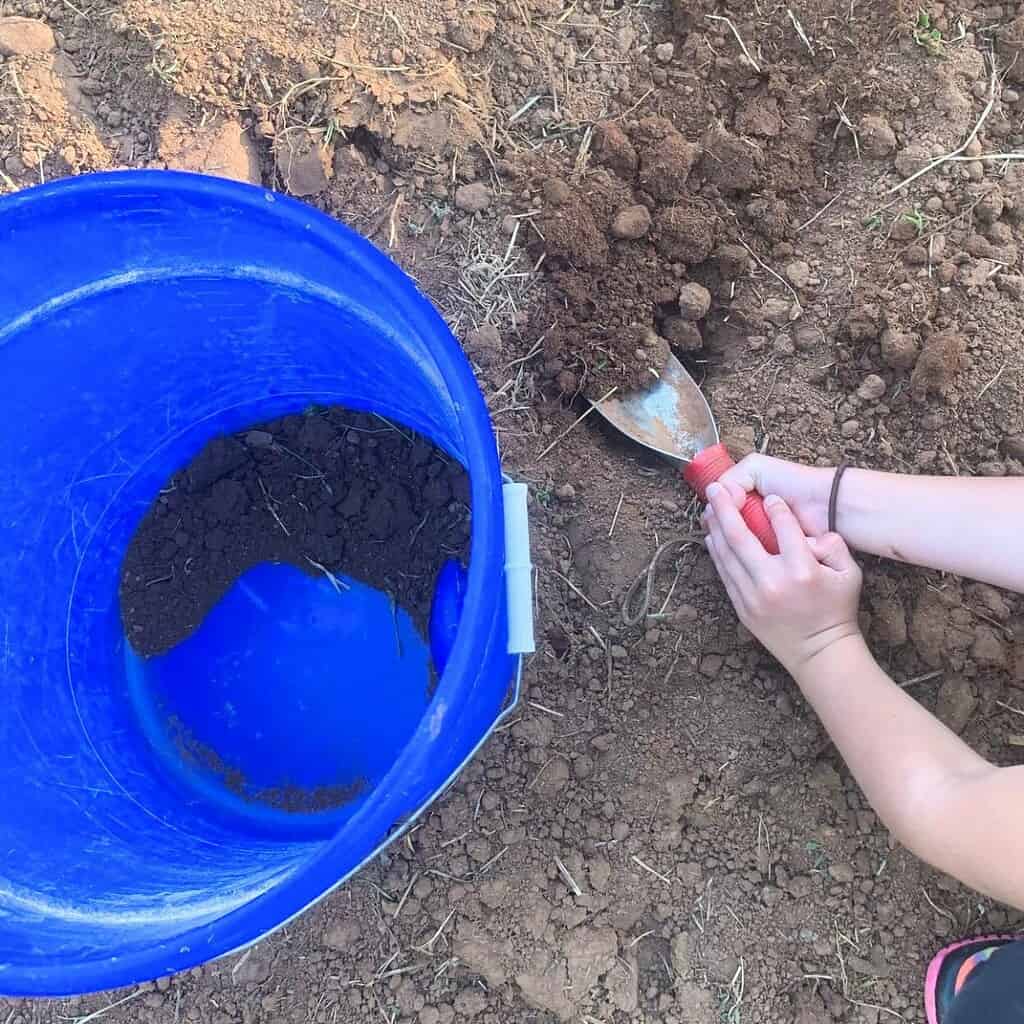
Soil Samples for Pastures
For pastures and other areas in sod, take a sample to represent the top 2 inches of soil. For land that will be turned and plowed for planting, take the sample from the top 5 inches of soil.
Soil Samples for Vegetable Gardens
If you want to grow a vegetable garden and you already have a dedicated space, collect soil from 10 or more places in your garden so that you can get a representative sample. The instructions on my soil sample box said to take 20 or more samples but I figured 10 would be enough for me since I don’t have a huge garden.
If you need a soil analysis on 10 or more acres, collect the requisite number of samples for your space.
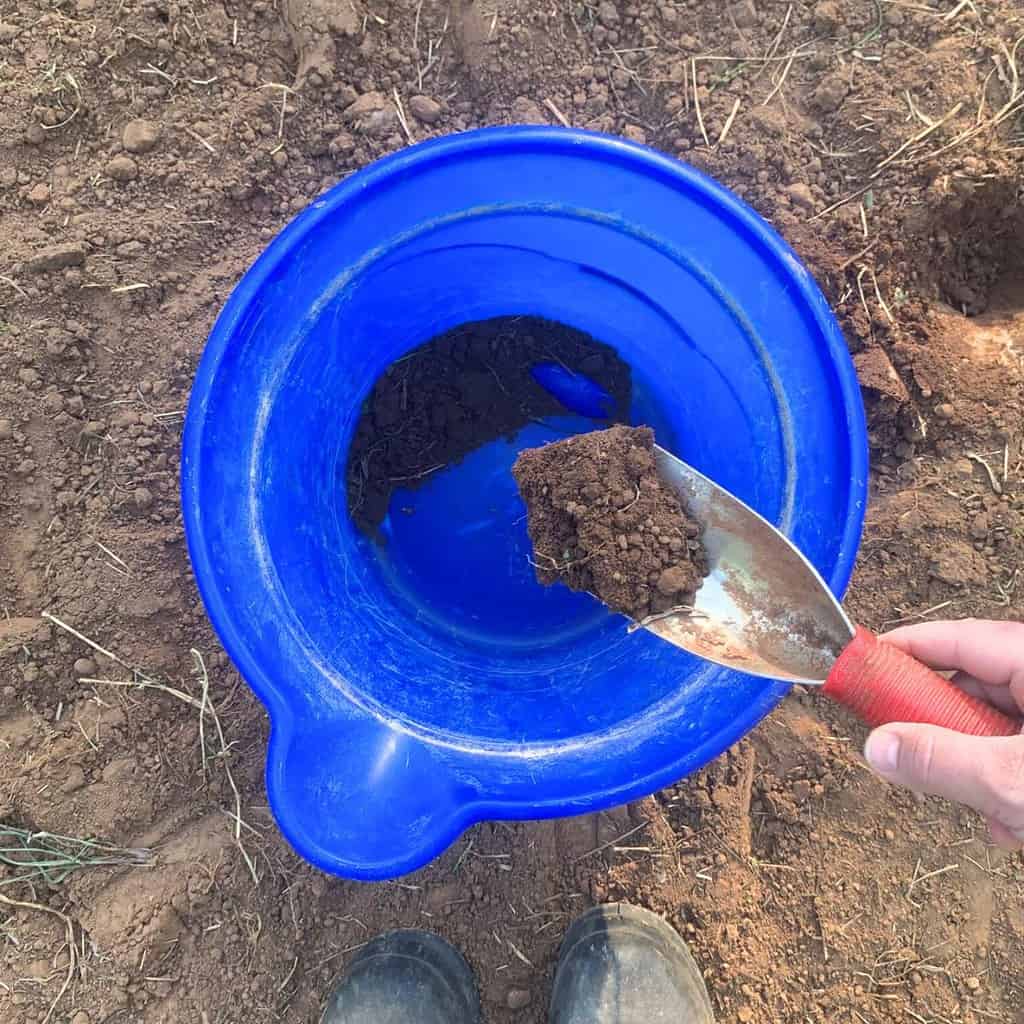
You need to collect enough soil samples to get about a pint of soil.
When you have collected a sufficient number of soil samples, mix all the soil together in your bucket.

Then fill up a bag or other container with about a pint of soil. You could also put your soil directly into the soil sample box!

Put your soil into the soil sample box. Include the required paperwork, what you intend to plant, and whether you prefer organic amendments. Then mail it all to your local lab.

Soil samples can be taken any time of the year. But be sure to send off your sample several months before your growing season. Also, it’s best not to sample your soil right after applying any amendments.
The pH and phosphorus levels are relatively constant throughout the year unless lime, fertilizer, or organic matter was recently applied. It’s best not to sample immediately after applying lime, fertilizer, compost, or manure.
The soil lab will analyze the soil and get your soil test report back to you either through email or standard mail within a week to 10 days.
What methods are used for soil lab tests?
Soil testing is critical to improve soil fertility for the production of row-crops, specialty crops, and forages.
All soil testing laboratories rely on extractants to determine the concentration of plant-available nutrients in soils. Extractants are chemicals developed to mimic substances that plant roots release to extract nutrients from the soil.
All soil testing labs should use extractants that were developed for the soil types and climates of their routinely submitted samples. For example, in my home state of Alabama, Auburn University Soil, Forage, and Water Testing Laboratory generally uses a Mehlich-1 extraction, which was developed for acidic soils of the Coastal Plain, Piedmont Plateau, and Tennessee Valley.
Here’s a table of common soil test extractants used in the United States.
| Extractant | Additional Names | Soil Suitability | Appropriate for Testing |
| Mehlich-1 | Dilute Double Acid | Acid, weakly buffered soils | P, K, Ca, Mg |
| Mehlich-3 | Acid to neutral soils | P, K, Ca, Mg, Zn, Mn | |
| Mississippi | Lancaster | Acid or alkaline clays | P, K, Ca, Mg |
| Bray P1 | Weak Bray | Highly buffered, acid soils | P |
| Olsen | Sodium bicarbonate | Alkaline, calcareous soils | P |
| Morgan | Acidic soils | P, K, Ca, Mg | |
| Ammonium Acetate | NH4OAc | All soil types | K, Ca, Mg, Na (not P) |
| DTPA | All soil types | Zn, Cu, Mn, Fe | |
| Hot water | All soil types | B |
Phosphorous (P); Potassium (K); Calcium (Ca); Magnesium (Mg); Sodium (Na); Zinc (Zn); Copper (Cu); Manganese (Mn); Iron (Fe); Boron (B)
The cation exchange capacity measures the soil’s ability to hold nutrients.
Cation exchange capacity (CEC) is a measurement of a soil’s capacity to retain nutrients. Sandy soils have a low CEC, loam soil has moderate CEC, and clay soil or soil high in organic matter has high CEC.
The amount of fertilizer required for maximum plant growth is dependent on the soil’s CEC. Since determining the actual CEC of soil is an expensive, time-consuming process, most soil test labs measure estimated cation exchange capacity (ECEC). The ECEC is simply the sum of extractable potassium, calcium, and magnesium.
Base saturation is the percentage of the CEC occupied by the cation form of calcium (Ca2+), magnesium (Mg2+), and potassium (K+) as opposed to acidic cations of hydrogen (H+) and aluminum (Al3+).
Base saturation is affected by pH, and an extremely low soil pH (and base saturation) can result in aluminum toxicity. Research from Alabama and throughout the Southeast shows that base saturation is not an effective method for making fertilizer recommendations.
Using base saturation to manage soil fertility can result in significant and expensive over-application of nutrients to the soil. Therefore, labs don’t report base saturation on routine soil tests, because fertilizing according to lime, potassium, magnesium, and calcium recommendations is more effective for maintaining soil fertility.
How do you read soil lab tests?
Basic soil test results will be pretty straight-forward. It will list your pH, nutrient availability, and soil texture. It will also make fertilizer recommendations for various types of growing.
We like to keep our gardens organic so we follow the organic fertilizer recommendations on our soil test.
Here’s a look at our recent laboratory test:
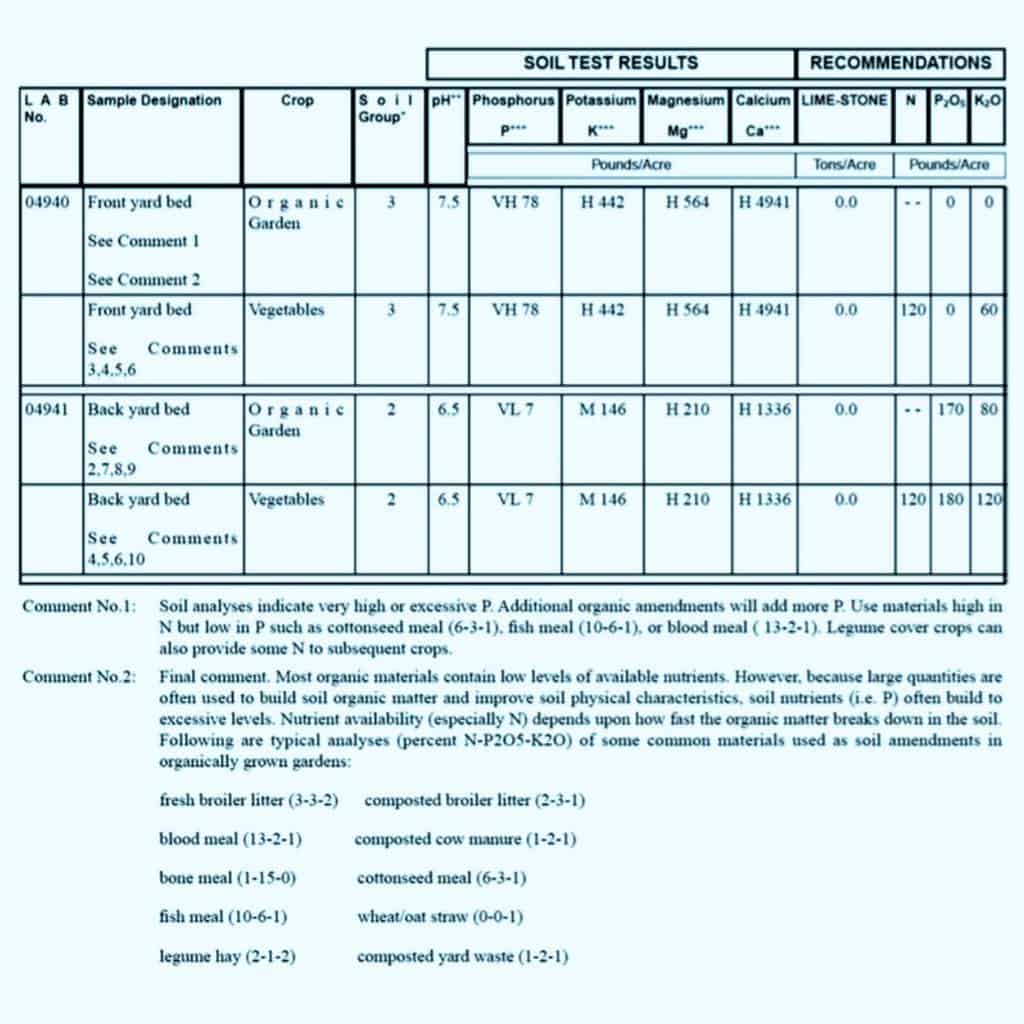
The nutrients that existed in the soil were pretty high. Using the organic soil amendments listed in the soil results, we added composted cow manure which has a relatively low nutrient value but builds up the soil at the same time. Other than adding a bit of sulfur to make it more acidic, we didn’t have to do much.
Improve your soil by adding organic soil amendments.
Organic soil amendments can be a great alternative to fertilizer. But you need to know the right ones to apply to your soil.
Soil amendments of organic origin (SAOO) are gaining popularity among farmers and home gardeners that are looking for alternatives to expensive commercial fertilizers. SAOOs provide essential nutrients to plants but they also build the soil’s organic matter, increase soil fertility, improve microbial activity, enhance water infiltration, improve water-holding capacity, and improve the soil tilth.
We like to spread composted cow manure in our organic vegetable garden. My sweet husband gets all of the winter compost out of our barn yard and into the garden after he tills it up.

Then he spreads it out evenly and gets it all ready for me to start planting. We will do this every year and the soil will get better every year!

Animal manures are organic fertilizers and they are a great way to add nitrogen and organic matter to your soil.
Don’t forget to run a routine soil analysis every so often so you can stay on top of what’s happening in your garden soil.
I want to encourage you to check out my post on if clay soil is acidic (low pH) or not. Additionally, you might be interested in learning the signs of an acidic soil and how to make it more alkaline.
Leave a Comment!
Did you find this post helpful? Please leave a comment and let me know what else you do to improve your gardening and growing success!
Other Related Posts
Use Vinegar to Acidify Soil (Lower pH) for Blueberries
Gardening: Is Clay Soil Acidic (Low pH)?
Signs of Acidic Soil (Low pH) and How to Make it Alkaline
How Much Worm Castings Should You Add to Soil?
Pin It For Later!
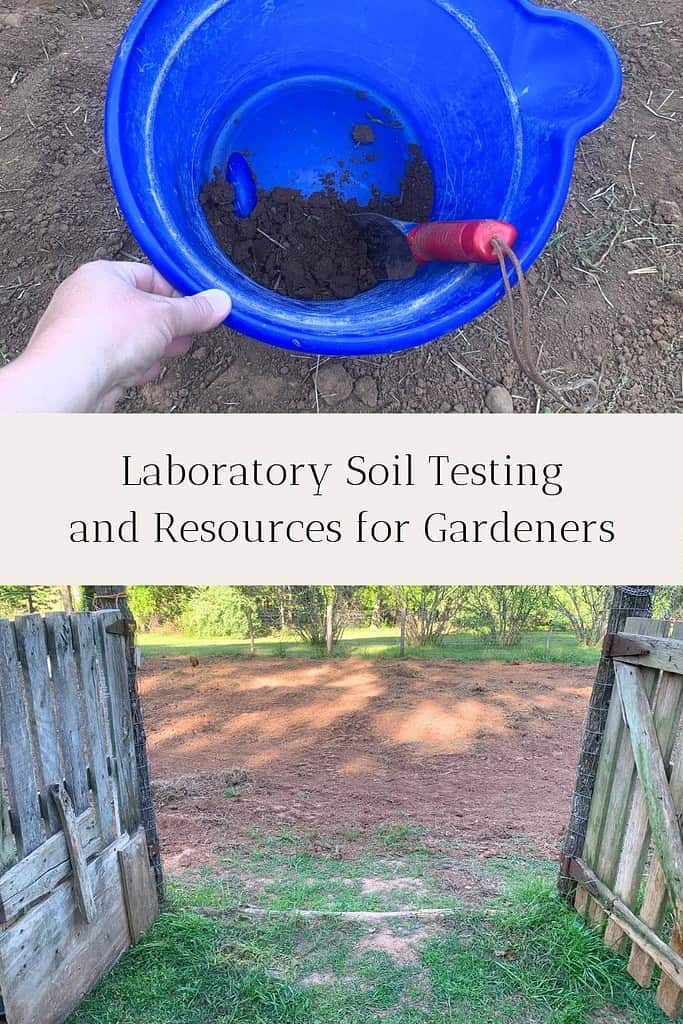

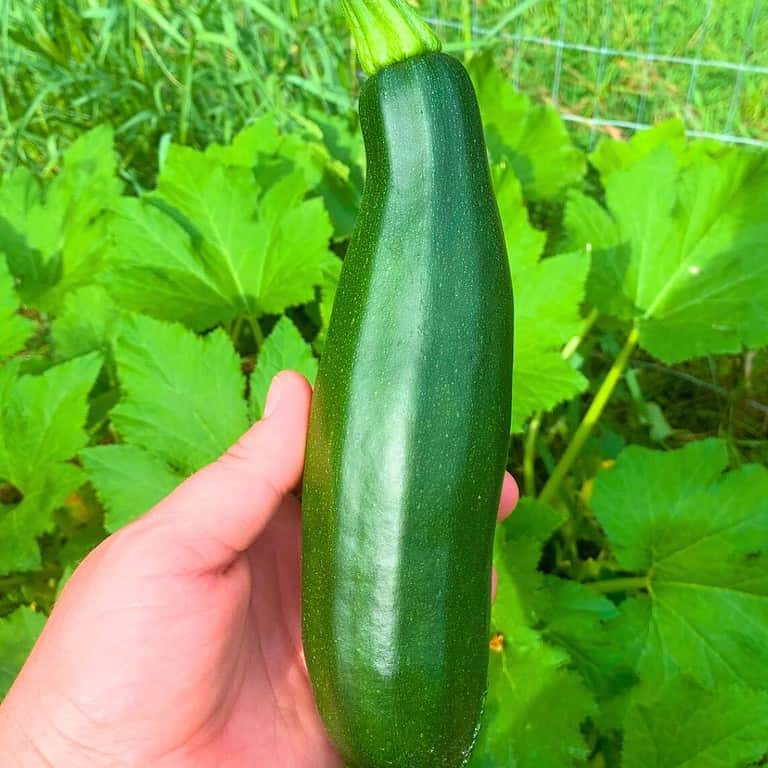
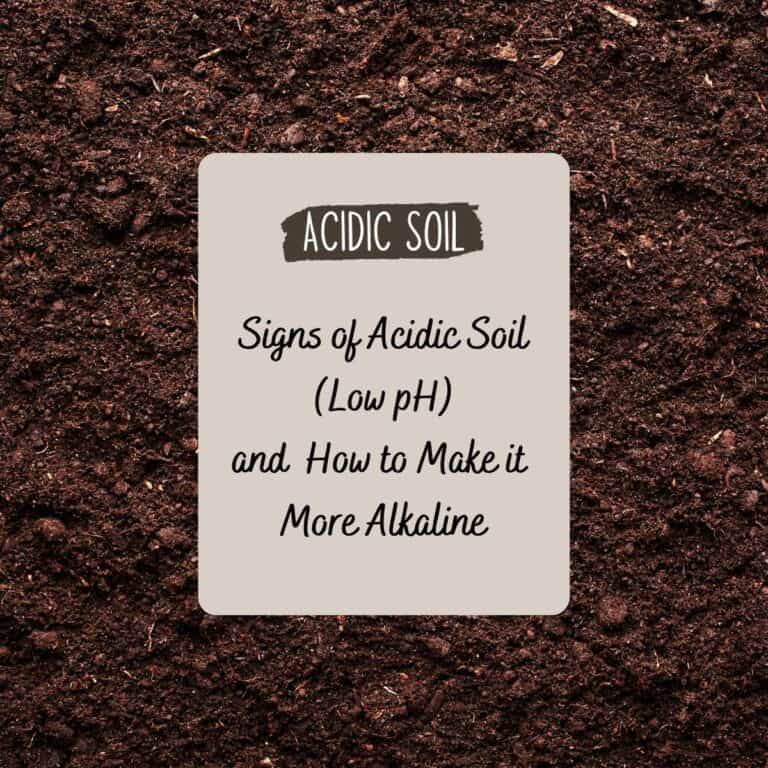
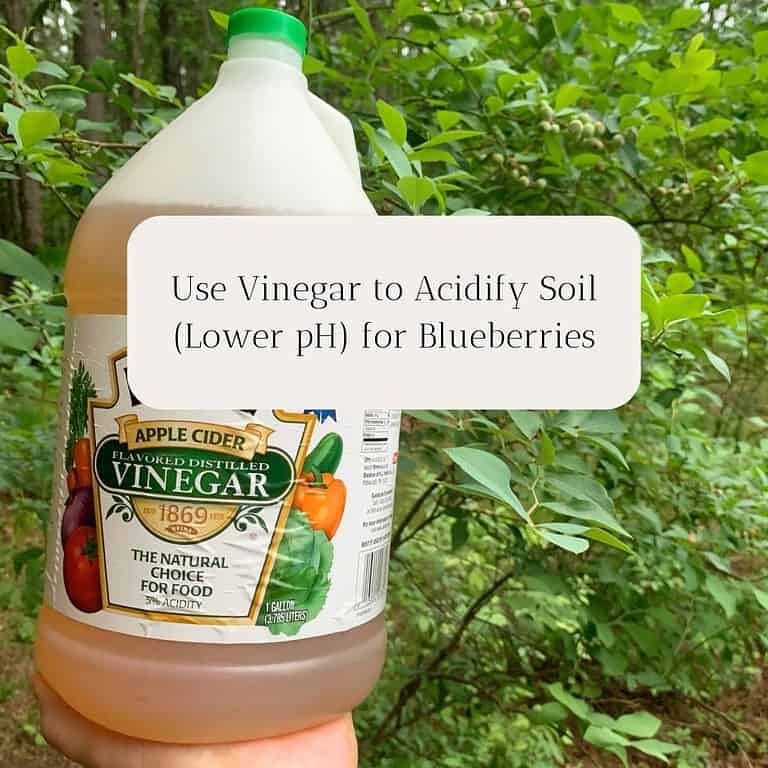
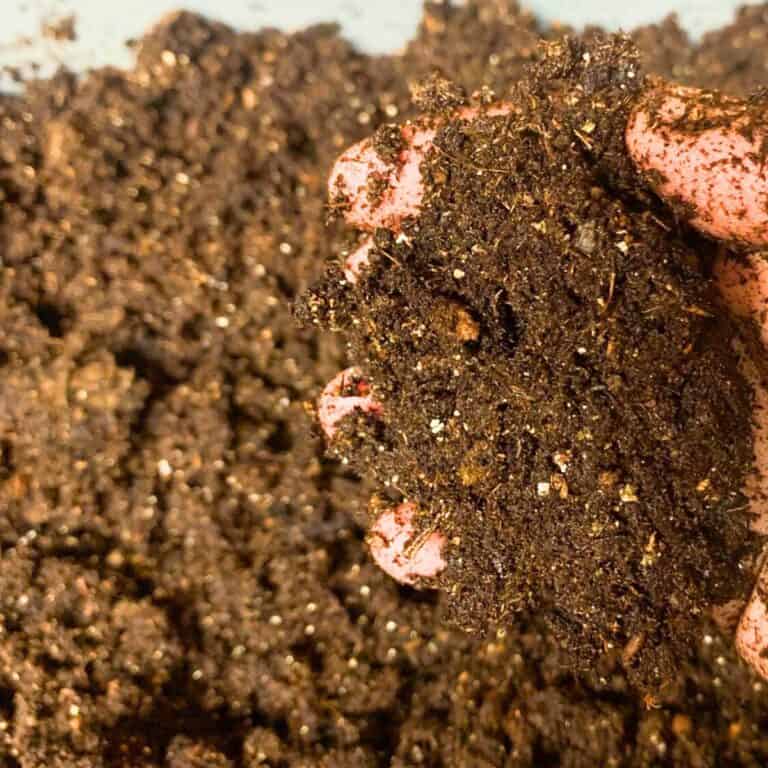

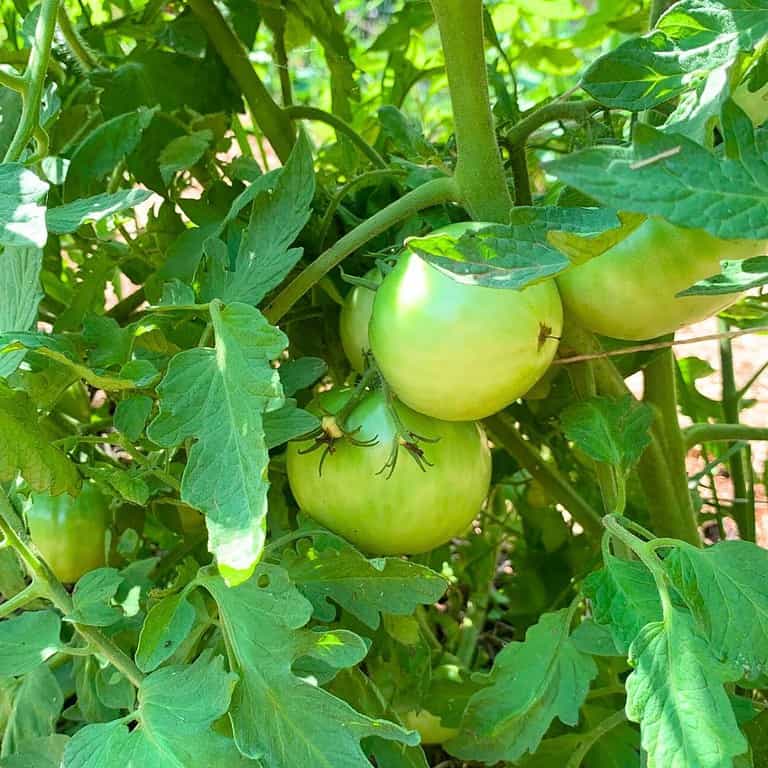
This is a lot of great info! I’ve only ever tested with a lab but have wondered about the over the counter test’s reliability. Saving for future reference! Thanks for sharing
I love this post! It’s so unique because I feel like people never really talk about this! Thank you for the great info.
I need to do this so badly! Thank you for the reminder:)
Wow, this is so interesting! Finally getting interested in gardening and this was so helpful
This post is full of great information and tips! Thank you for the wonderful post! 🙂
Soil testing is such a excellent method for anyone working in agriculture or even home gardening. I had no idea some state universities with Colleges of Agriculture could be part of the USDA’s NIFA land-grant partnership. That map of land-grant universities is a fantastic resource for connecting with local experts! Thank you for highlighting the importance of soil testing!
Hi Willie, You’re absolutely right and you’ve very welcome! Thank you for the compliment!!
Love, Rebekah